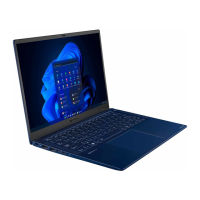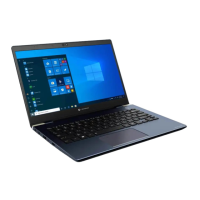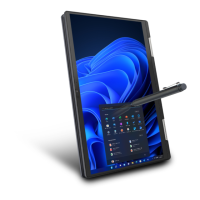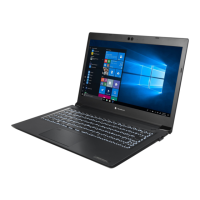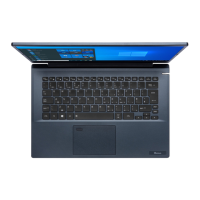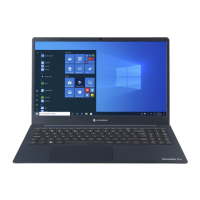Maintenance Manual (960-942) 2-26
Troubleshooting Procedures
4. Plug the other end of the cable into the RGB port on the USB Type-C
adapter.
Switching the image output from computer’s screen to the
external display
When you press FN + F5, the screen for selecting the device to show
image will appear. Select [Second screen only]. Then check if the desktop
image is shown on the external display. If any problem occurs on sound
and image output, perform Procedure 2.
Procedure 2 Connector Check and Replacement Check
Check 1
Make sure the external display is connected to RGB port with
the cable. If the connection is loose, reconnect it firmly and
repeat Procedure 1. If there is still an error, go to Check 2.
Check 2
Check the setup condition of the external display and returns to
Procedure 1. As for the setting of the external display, refer to
the instructions manual for the external display. If the problem
still exists, perform Check 3.
Check 3
The external display may be damaged. Replace it with a new
one and repeat Procedure 1. If the problem still exists, perform
Check 4.
Check 4
USB Type-C adapter may be damaged. Replace it with a new
one. If the problem still exists, check the PC condition.
2.16.2 LAN port
To check if the LAN port is malfunctioning or not, follow the troubleshooting
procedures below as instructed.
Procedure 1: Check on Windows OS
Procedure 2: Connector Check and Replacement Check
Procedure 1 Check on Windows
The test program to check the LAN function is not prepared on the
diagnostic test for maintenance program. So check if the LAN is working
properly by using the function of Windows. How to connect the LAN cable
is as follows:
1. Connect the USB Type-C adapter to the Thunderbolt 4/USB type-C
connector on the computer.
2. Turn off the other devices connected to the computer and the USB
Type-C adapter.
3. Plug the one end of the LAN cable to the LAN port of the USB Type-C
adapter.
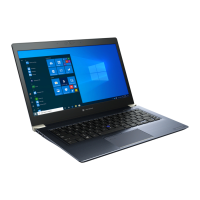
